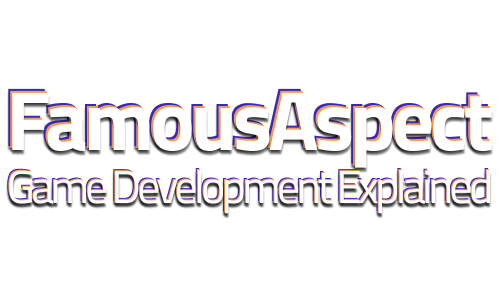 The following are excerpts from a conversation with Richard Vorodi, Senior Game Designer at Crytek. Richard’s’s hit games include classics like Wave Race, 1080° Avalanche, Mario vs Donkey Kong, Metroid Prime, and more recently, Darksiders II. This conversation originally took place in April of last year.
The following are excerpts from a conversation with Richard Vorodi, Senior Game Designer at Crytek. Richard’s’s hit games include classics like Wave Race, 1080° Avalanche, Mario vs Donkey Kong, Metroid Prime, and more recently, Darksiders II. This conversation originally took place in April of last year.
EL: The question I start everybody off with is, what is game design?
RV: That’s the big question. And I think that you’re going to get a different answer from every person you speak to. I think it’s probably more of a personal question than an absolute.
Good game design means it’s your job not to make a fun thing. That’s one of the tools in your bag of tricks. A game designer’s role is ultimately to craft the rules and the presentation of an experience for an audience that you have in mind. Other tools in your kit would be knowing how to bring out anxiety in a player, or fear and discomfort, and then knowing how to reward them and knowing how to entertain them.
I think game design really is that you’re just a curator. You’re just overseeing and trying to get as close to the result from the player that you have in your mind.
EL: Why is it important to be able to create emotions other than fun?
RV: I don’t think that you can have fun for extended amounts of time without feeling some sort of stressor. If you’ve ever laid around your house for a week and did nothing but watch movies and eat pizza, after a while those things aren’t as enticing to you anymore.
It’s the minute you go back to work on Monday and you start a hectic work week that you long to be back on your couch, eating pizza, watching movies. That’s going to hold true for any audience that’s experiencing what you’ve created. You need to have them feel a range of emotions, the sweet and the sour.
EL: I’m curious, of the people who I’ve talked to who’ve worked on console, I think you’re the only one with handheld experience as well.
Do you find there are a lot of commonalities? Are you using the same tools in your designer toolbox on Mario vs. Donkey Kong as you are on Darksiders II?
RV: That’s a good question. I think you’re always looking into your bag of tricks and trying to do the same things.
If you compare Mario vs. Donkey Kong to 1080° Avalanche, there’s certainly levels that have been created in Mario vs. Donkey Kong where we put a lot of heavy puzzles up front and then maybe we’ll add an enemy to a situation to amp it up even more, and then the payoff is, right when you solve that, there’ll just be this slide that goes straight down into the goal door.
So your last impression is not like, “Man, that seems hard.” It was like, “Oh wow, look what I just did. I jumped over the sky and slid down this thing and solved this puzzle. Look how smart I am.”
So that’s comparing something from a console experience right down to a two-dimensional handheld experience. I used basically the same technique.
And Darksiders features sort of the same thing. You’ll have puzzle elements and then you’ll have action sequences. And then you’ll have areas where you can just sit and just sort of reflect on the environment or take in some narrative.
I think the key is to always do more than what is expected. If you walk into a room and you expect to just be attacked and swarmed by enemies, it also pays off to not let the player be right about what their expectations were. Because then, all of a sudden, instead of auto pilot, they have to actively focus on the experience to keep up with it.
EL: We’ve talked a little bit just about game design in general. What do you think is the role of a game designer?
RV: That’s another really interesting question because I think it varies depending on the team that you’re in or the size of the team, and maybe geographically where that team is located. I think the Japanese method for game design, in my experience, has always been about the concept or the mechanism: the gameplay first. “What is this thing that we’re trying to get the player to feel? What is this thing that we can do?” Then once we’ve figured that out, then we’ll put a wrapper over it and, okay, we’ll make it a snowboarding game, or we’ll make it a Mario game. There are things like that.
And I think the Western approach so far that I’ve experienced is the concept is already sort of established. That’s the thing people think about first which is, “I want to make this game about aliens,” and then what kind of mechanic will support that high concept?
So it depends on where you are, but the job is always the same. The game designer is the gatekeeper to that experience and they’re the ones that ultimately are putting the final stamp on the product that the player is going to interact with.
EL: What is the biggest challenge you face as a game designer?
RV: Game design, in the beginning, if we’re not talking about implementation or production—if we’re just talking about simply designing something—is usually on paper or it’s on pictures or it’s in your mind. A lot of what you are being a zealot about is in the ether. You really have to be a good pitch person in order to get the other departments on the team excited about your idea.
I think it’s a very impractical art, whereas art and engineering are based on absolutes and if you draw a picture you know whether or not you liked the look of that picture, that character, that environment, things like that.
In design, people really have to trust and have faith that what you’re saying will scare the player or be fun for the player or make the player laugh or cry—that those things are accurate.
When you get into production, when you start blue-rooming out levels, you have something that people can see. But oftentimes there are steps in between going from your pitch to the blue room, and that’s really when the idea starts to come together. The biggest challenge is getting to the production phase with the thing that you believe in.
EL: Is there an example you can think of when you had a feature or a mechanic or a level that you felt really strong about and knew that it would be really fun or really high quality, but you weren’t able to convince the other members of your team—or your producer, whoever—to get enough momentum behind it to actually get it in the game or maybe to keep it in-game once it was first implemented.
RV: There are tons of things that you think are going to be good and then ultimately just don’t get made. With the avalanches in 1080°, it was something that was discussed really early on in the project and then was deemed maybe too risky of a thing to do whereas it was unproven technology and it was unproven gameplay. Basically it was really hard to get people to rally behind it because of the sheer amount of work and unknowns that were involved in completing that.
But as time went on, people on the project that were proponents of it would just keep chipping away at folks until eventually we got a pretty good consensus that, hey this is something we should try. And ultimately the game ended up being titled after that feature.
And if you look at most snowboarding games that have come out since then, you don’t really find avalanches in them. I think it was a really scary, risky thing that we did in that game. That’s something I’m really proud of.
EL: Can you share an important lesson you’ve learned during your career?
RV: I think the best lesson I ever learned was that you should always put the player first when you’re designing. You should never do things because you want to do them solely. It should be the best thing for the product and the best thing for your audience.
There are a lot of times I’ll be constructing levels and you get to these avenues where you can turn left, or turn right. And if you turn left, that’s the thing that’s gonna be the coolest to you. That’s the scariest or the hardest thing that’s exciting you most about what you’re making. But then there’s this little voice in the back of your head that’s saying, “Well, no one’s ever going to understand this. This is something that I like. This is a selfish design.”
And that’s when you should go right and build for the player. Because ultimately, what we’re doing is we’re serving the public. We’re serving the player. We’re serving the audience. And I think that’s the best thing you can do.
The other lesson that I learned recently—and has to do with just the business of videogames and your career within that—is it’s okay to try new things. It’s okay to feel unsafe and it’s good to seek out new challenges rather than letting yourself get stale. Making videogames is all about passion. And it’s okay to try and seek out avenues that are going to excite you.
That was a lesson that I learned that I never thought that I would have to learn. I think it’s usually important to work on the projects that excite you, the projects that you think you’re going to have the most impact on. Because really how many more games can we make as individuals?
Triple-A games take two to three years to make, plus wrap-up time. Basically your last game should always be considered as “Your last game”. You don’t know that you have another game down the road.
Working on something that doesn’t absolutely excite you and thrill you, that you don’t put your all into, I think is sort of a crime against yourself.
READ MORE
Richard Hilleman, Chief Creative Director at EA
Jenova Chen, Chief Creative Officer at thatgamecompany
Paul Barnett, General Manager of EA Mythic
